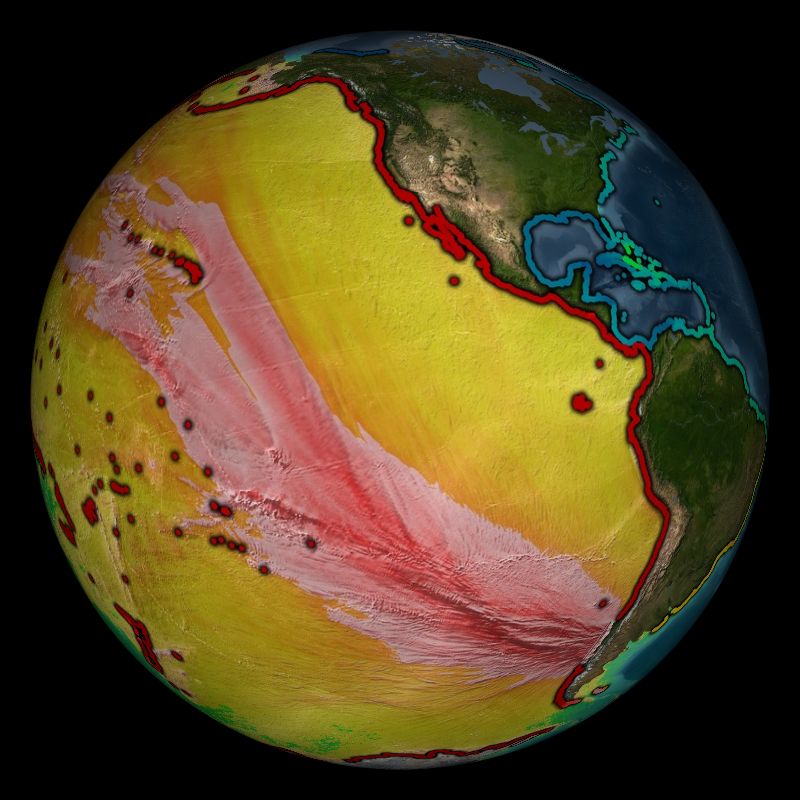

It struck granitic crust overlain by thick sediments and shallow ocean waters, blasting a roughly 100-kilometer-wide (62-mile-wide) crater and ejecting dense clouds of soot and dust into the atmosphere. That work was conducted by co-author Brandon Johnson of Purdue University.īased on the findings of previous studies, the researchers modeled an asteroid that was 14 kilometers (8.7 miles) in diameter, moving at 12 kilometers per second (27,000 mph). First, a large computer program called a hydrocode simulated the chaotic first 10 minutes of the event, which included the impact, crater formation and initiation of the tsunami. The modeling portion of the study used a two-stage strategy. "We feel these deposits are recording the effects of the impact tsunami, and this is perhaps the most telling confirmation of the global significance of this event," Range said.

But given the age of the deposits and their location directly in the modeled pathway of the Chicxulub impact tsunami, the U-M-led research team suspects a different origin. The heavily disturbed and incomplete New Zealand sediments, called olistostromal deposits, were originally thought to be the result of local tectonic activity. Of special significance, according to the authors, are outcrops of the K-Pg boundary on the eastern shores of New Zealand's north and south islands, which are more than 12,000 kilometers (7,500 miles) from the Yucatan impact site. "The geological evidence definitely strengthens the paper." "We found corroboration in the geological record for the predicted areas of maximal impact in the open ocean," said Arbic, professor of earth and environmental sciences who oversaw the project. In contrast, the largest number of complete K-Pg boundary sections were found in the South Atlantic, the North Pacific, the Indian Ocean and the Mediterranean. The North Atlantic and South Pacific had the fewest sites with complete, uninterrupted K-Pg boundary sediments. Most of the sediments came from cores collected during scientific ocean-drilling projects. The team's simulations show that the impact tsunami radiated mainly to the east and northeast into the North Atlantic Ocean, and to the southwest through the Central American Seaway (which used to separate North America and South America) into the South Pacific Ocean.įor the review of the geological record, U-M's Moore analyzed published records of 165 marine boundary sections and was able to obtain usable information from 120 of them. The study authors calculated that the initial energy in the impact tsunami was up to 30,000 times larger than the energy in the December 2004 Indian Ocean earthquake tsunami, which killed more than 230,000 people and is one of the largest tsunamis in the modern record. "The distribution of the erosion and hiatuses that we observed in the uppermost Cretaceous marine sediments are consistent with our model results, which gives us more confidence in the model predictions," said Range, who started the project as an undergraduate in Arbic's lab in the Department of Earth and Environmental Sciences. The review of the geological record focused on "boundary sections," marine sediments deposited just before or just after the asteroid impact and the subsequent K-Pg mass extinction, which closed the Cretaceous Period. "This tsunami was strong enough to disturb and erode sediments in ocean basins halfway around the globe, leaving either a gap in the sedimentary records or a jumble of older sediments," said lead author Molly Range, who conducted the modeling study for a master's thesis under U-M physical oceanographer and study co-author Brian Arbic and U-M paleoceanographer and study co-author Ted Moore. In addition, U-M researchers reviewed the geological record at more than 100 sites worldwide and found evidence that supports their models' predictions about the tsunami's path and power. 4 in the journal AGU Advances, presents the first global simulation of the Chicxulub impact tsunami to be published in a peer-reviewed scientific journal. The study, scheduled for online publication Oct.

It also triggered a monstrous tsunami with mile-high waves that scoured the ocean floor thousands of miles from the impact site on Mexico's Yucatan Peninsula, according to a new University of Michigan-led study.


 0 kommentar(er)
0 kommentar(er)
